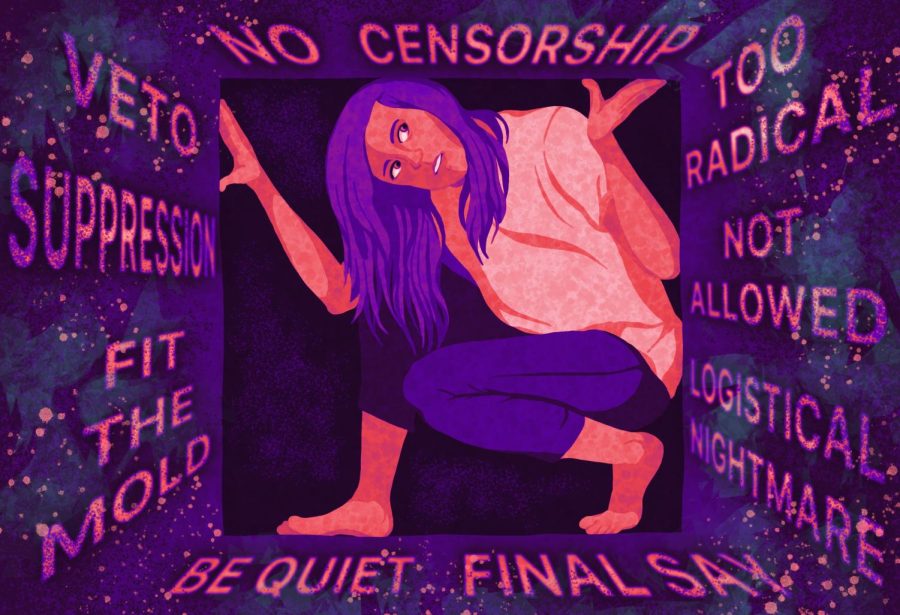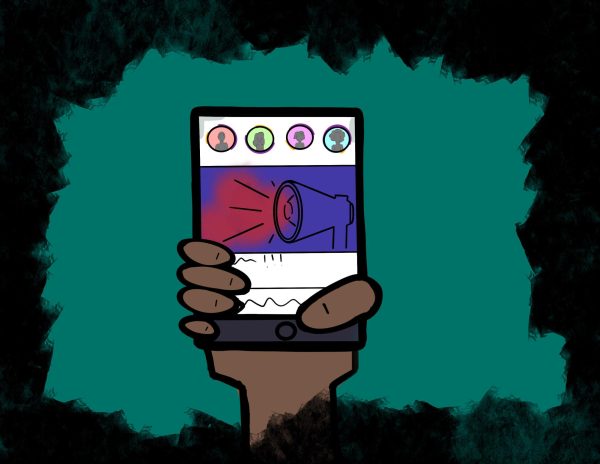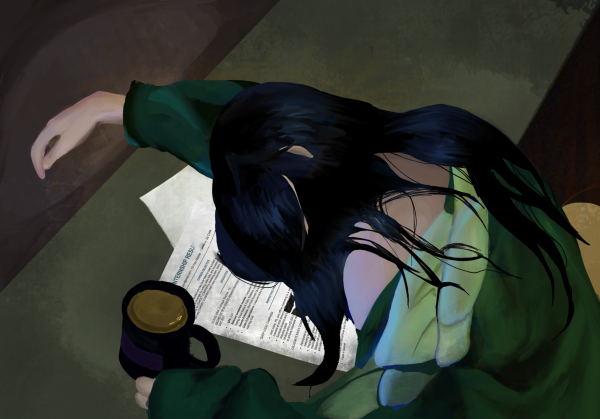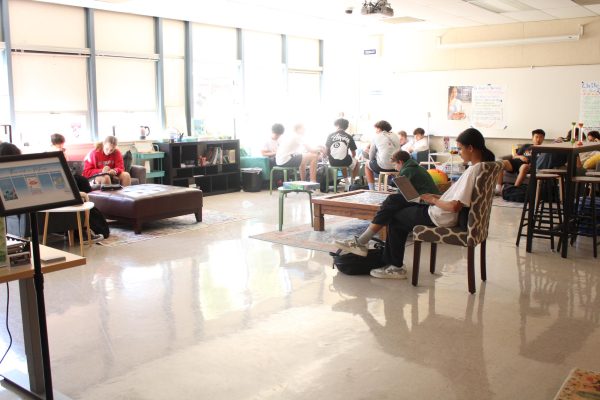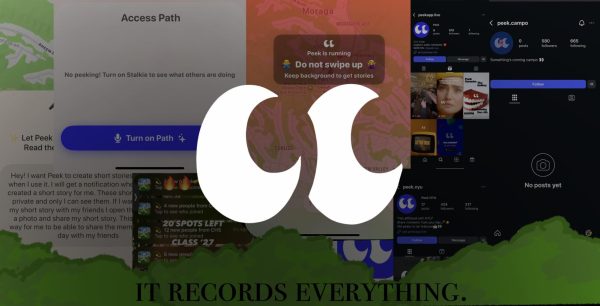LEC Students Deserve More Recognition, Appreciation for Hardships
LEC students have struggled to align with the desires of Campolindo administration.
This school year, the district has been pushing for a more equitable school and community with the implementation of equity academies and the creation of the Leadership Equity Council (LEC). LEC was created to bring student voices to light and through that, reduce the amount of prejudice on campus. However, many are unaware of the uphill battle of getting change implemented at Campo, which causes excess stress and work for those who are simply trying to make Campolindo a better place. LEC students deserve far more recognition and appreciation from the student body for all their efforts trying to make equitable change against the hardships of getting approval from the district.
LEC’s Executive of the Restorative Justice Subcommittee senior Caroline Fitzpatrick, who worked with the class’s advisor Molly Kerr to create the class, said, “There’s so much reform that we want to do at Campo. Campo is a work in progress, there’s so much to be done to make it more equitable and inclusive…We all have the same goal, like LEC, largely the student body, and admin. We all want Campo to be more equitable and inclusive but there are a lot of roadblocks that we hit with [getting ideas and changes approved], which is frustrating but understand[able].”
1 junior LEC member, who preferred to stay anonymous and will be referred to as Alex, explained the challenges faced by the class, “We’re advertised as student-led, and you can’t really say that when we are more so student-led through the filter that is [the district]… I don’t think it inhibits completely our ability to do things, like…our wellness group has done bake sales and wellness events, all that, we’ve had a speaker. But it’s true that all these different people telling us ‘no’ or trying to get in our way [when we’re trying to make changes happen], it’s pretty taxing on the group as a whole with how slow the process is because we’re supposed to be this, honestly, Save-All and now it’s simmering down. It’s difficult.”
The main roadblock appears for LEC in the equity academies. While many students assume the academies are created by LEC, member junior Elizabeth Chien explained that the equity academies “are not made by LEC. They’re made by…Dr. [Lynnā McPhatter-]Harris,” who is the Director of the Student Support, Equity and Inclusion of our district.
When students who are not in the class think of LEC, the 1st thing that pops into many heads is the equity academies, something that a noticeable amount of students have expressed their discontent towards. Unfortunately, it’s not the many projects that LEC has created that people 1st think of, such as the Speaker Series or the Athletic Leadership Council. Fitzpatrick said, “I feel like some people in the student body still don’t know what LEC is, or don’t know what we do, or think that we’re ineffective, which is upsetting because as someone in the class, 1 of the leaders of the class, I can attest to the fact that…we do so much, especially because this is the 1st year ever of the class.”
Having a negative attitude associated with the equity academies can transfer negative feelings towards LEC, which some members have noticed students have done. Students need to understand that LEC is not making these presentations and are not stealing students’ academy time for them. Students outside of the class also need to know the many challenges LEC students have to work through in order to make even small changes within the equity academy slides.
The most recent equity academy, which focused on Sexual Orientation, Gender Identity, and Expression (SOGIE), is the best example of these challenges. SOGIE was the 1st equity academy to include student-made videos discussing SOGIE. Senior Aeryn Armstrong-Azhar and LEC member was 1 of the students who spoke in the videos. “[They were] very strict about how long we can talk [in the video]… it was very limited,” said Armstrong-Azhar.
Alex added, “Almost every video we’ve had will have to be approved by [Principal John] Walker and admin. And even sometimes they give us basically a script and say, ‘This is where you insert what you have to say’…in that way, we sometimes feel like equity stand-ins where we’re just [told] ‘Put some Diversity Equity stuff in here,’ we put it in and then they take it. In general, in the videos especially, they’re just kind of mandating us to do something and we just have to do it.”
The SOGIE academy slides included a visual to represent the spectrum of sexuality, but it excluded many identities. Armstrong-Azhar explained that the district would not allow for the visual to be changed in order to incorporate all the identities. “We had a lot of comments on it about how it wasn’t fully inclusive, how it just wasn’t a great visual…Our original plan was to give out a visual called The Genderbread Person, which can be found at https://www.genderbread.org/. And we were told we can’t do that because the teachers hadn’t been trained on the information. But the teachers are barely trained on the lessons as a whole,” said Armstrong-Azhar. “The Genderbread Person…It includes the differences… between sexual and romantic attraction, which was just not talked about at all. In my class, I’m able to talk about it because I’m so used to having these conversations. But I know hearing from other students…their teachers just said a bunch of terms and then moved on because they didn’t know how to talk about ‘What does it mean to be asexual?,’ ‘What does it mean to be aromantic?’ and how these visuals aren’t perfect.”
Assistant Principal Vanessa Knight, who worked to support the students who executed the SOGIE lesson explained the process and many people the slides go to, which is 1 reason why they aren’t changed easily.
“Dr. Harris…creates the slides [and] then sen[ds them] out. She creates the lesson, she adds the images that are supposed to be used. Principals also review [the slides], other administrators like [Assistant Principals]… we all review [them] and then that’s shared with LEC or the respective leadership student groups that are gonna help support that lesson district wide, and [the lesson] also goes through our teachers who are a part of the union, they view the lesson to know the materials that they’re expected to teach,” said Knight.
Armstrong-Azhar and Fitzpatrick suggested several ideas on how to make the presentation more inclusive, such as giving students handouts with more information, which were rejected by the district. Fitzpatrick felt that, “It was just very exclusive when the whole lesson was supposed to be about inclusivity… [it] was really frustrating. And it felt kind of hypocritical because [our district is] all about inclusivity and belonging.”
“It’s like, ‘you’re going to help lead the equity lessons, you’re gonna help teach it.’ It’s not ‘you get to help edit them and make them better,’” added Armstrong-Azhar.
Knight explained why these changes were not implemented, “When the request came up to use a supplemental resource that was not a part of the original document, we had to go through a proper channel so Mr. Walker and I have reached out to Dr. Harris…We discussed concerns with using [The Genderbread Person], because although the students felt strongly about wanting to use that [visual] and there’s a lot of great reasons why they want to use that, ultimately the students aren’t delivering that lesson. It’s the responsibility of teachers delivering that lesson. And so administrators, we have to be able to support teachers with delivering an effective lesson and make sure that we provide proper training for teachers to deliver effective lessons for all students. Having a supplemental resource added in, we didn’t have the opportunity to train and support teachers to effectively deliver that content and material without [the] supplemental resource.”
“We, as Campolindo, in some situations cannot make independent decisions that are different from a lesson where the goal is to have cohesion, when those lessons are taught among all teachers with all students. Campolindo cannot just choose to do their own thing and implement their own resources without approval,” Knight added.
“1 thing to try to understand…is that [The Genderbread Person] address[es] several different things and different aspects of a person’s identity, or avenues to express themselves and their identity.[…] Teachers are not equipped, not because they don’t have the skill set, but during those lessons is not a time for them to provide a supportive conversation or follow up conversations for students if they have different feelings towards that, whereas our Wellness Center would be a more effective way to address that. Also our affinity groups to be able to discuss that like our SAGA group would be more appropriate because you can have those discussions and really get into what those definitions mean. You really don’t do [the visual] any justice [with such limited time].”
Fitzpatrick, however, added, “I wish that me as a queer student, I wish that my feedback and thoughts about the SOGIE equity lesson…[were] valued and heard more and my thoughts were implemented, so that other queer students would feel seen at Campo.”
While some LGBTQ+ students who are more comfortable with their identity want to see better visuals in these lessons, Knight and other administrators have to consider those who are still unsure about their identity. “Students are still figuring it out. They need more support to try to go through that. They need time to sit with it, absorb it, and think about how that applies to themselves, right? That can’t be done in a 40 minute lesson… There are some students that are not yet at a level to have an effective conversation with using such a supplemental resource. And [it] actually can create more harm, within classroom spaces, by [students] making inappropriate jokes. By joking around about the terms, making someone feel uncomfortable. [Asking questions such as] Oh, where do you fall on this? Or how do you identify? Or outing someone who’s not yet comfortable with their own individuality and where they fall within that resource,” said Knight.
“We get reports all the time from students saying that, ‘This teacher didn’t deliver this lesson effectively’, ‘this teacher just breezed through this’, ‘this teacher didn’t do that.’ And so the way that we make it more effective as we stick to a cohesive, district-approved lesson and not allow for it to go so many different ways with so many different liberties with so many supplemental resources. That’s how we really have more effectiveness…We want all students to feel like they belong, and connect, and feel included here at Campo, and at the time of the lesson that we had the resources that were already included with the lesson that Dr. Harris made, they met those goals of our mission statement. […] We have to be responsible for making sure all students effectively learn the lessons and learn information related to SOGIE that they needed to learn.”
Due to the need for district wide cohesion, and also because of the many people that are affected by changes in the equity academies, LEC is only able to edit the speaker notes in the slideshows. Despite the limited amount that LEC students are able to change, members are still working hard to make equitable changes at Campo.
LEC deserves appreciation. These students have spent hours working towards making our student body more equitable (something that would benefit us all), on top of how hard it is to make the smallest changes. Those in LEC should be receiving far more recognition for not only the hurdles they have to jump over to get projects approved by the district, but also just by putting in the laboring time and effort to work on bettering our school and community. This negative association between LEC and the equity academies, which they are barely allowed to edit themselves, needs to end. The student body should appreciate the amazing students in LEC who just want to see Campolindo become a more inclusive place.
Your donation will support the student journalists of Campolindo High School's The Claw. Your contribution will allow us to produce more issues and cover our annual website hosting costs.

Senior Maggie Doolittle has been a Girl Scout since kindergarten, racking up a total of 11 years in her troop. "I have continued [Girl Scouts] because...
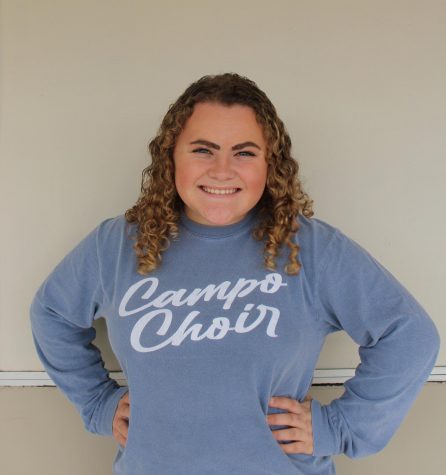
Makayla Erickson, a senior at Campolindo, enjoys participating in the Campo Choir. From a young age she was fond of performing, but realized her passion...
